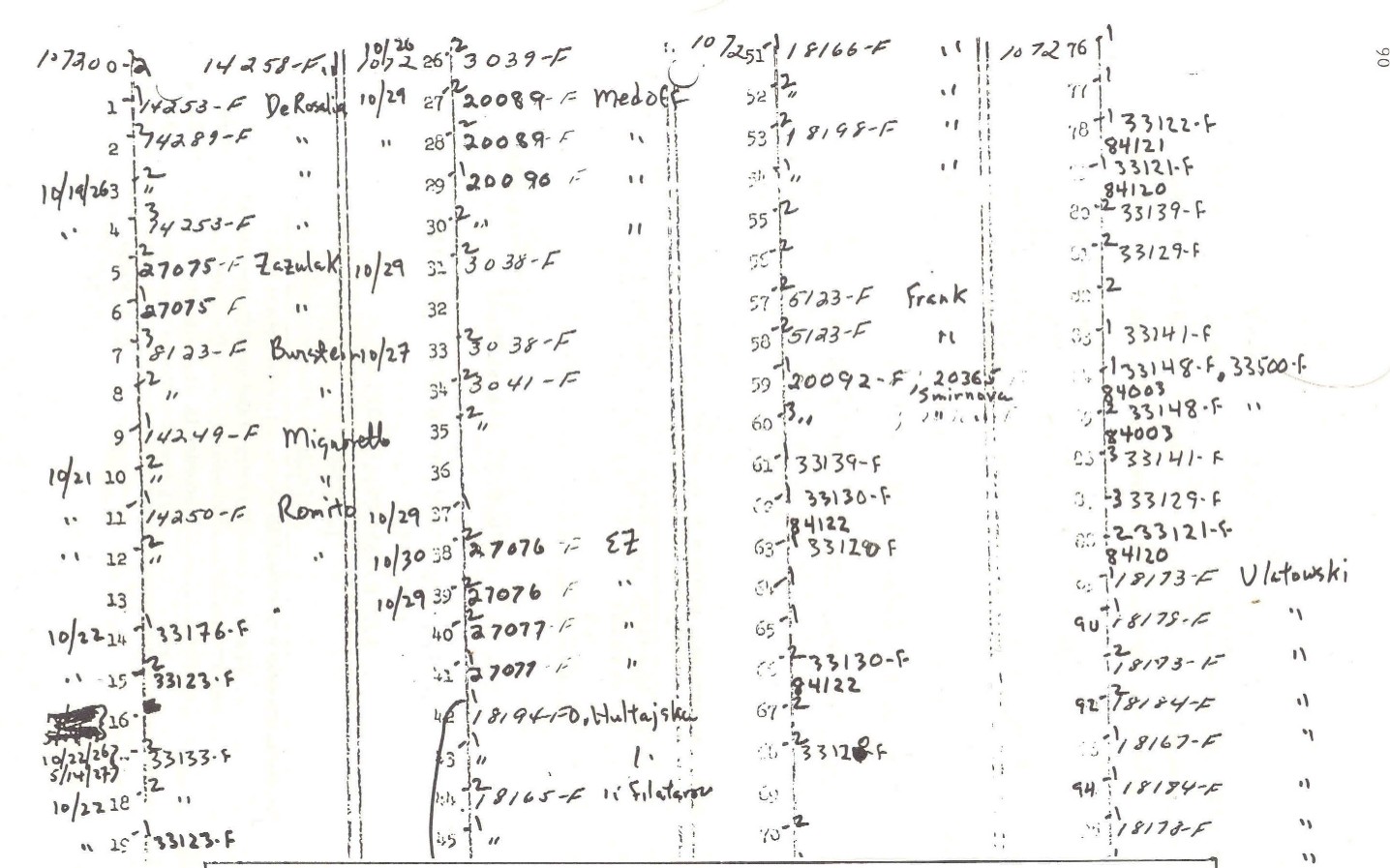
The E-Discographer #2 January, 2001
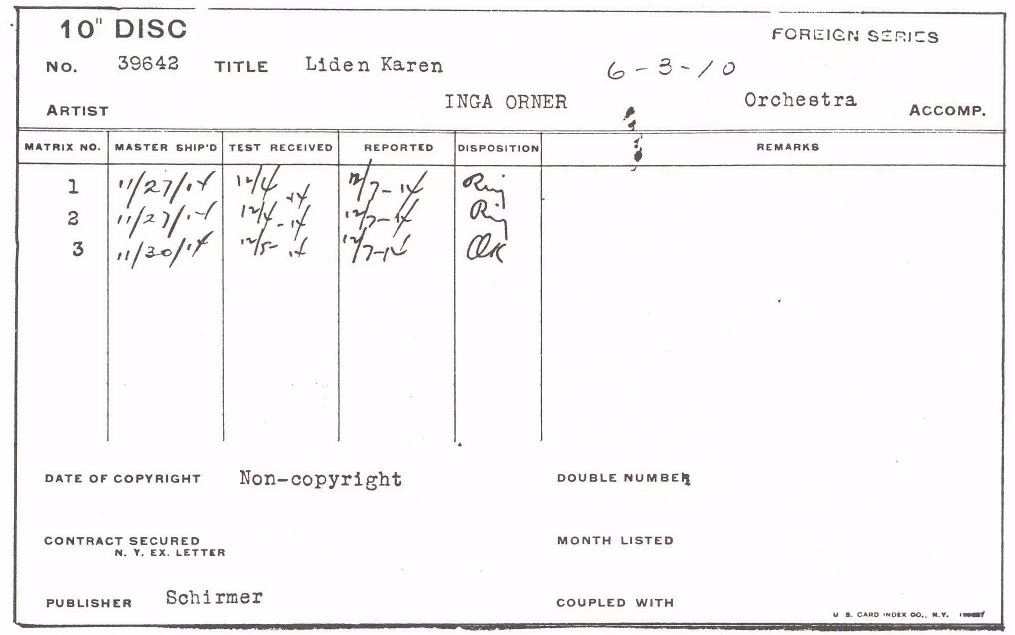 A 1914
master card showing a song recorded three times near the end of November by the
Norwegian soprano Inga prner, with an unspecified (probably studio) orchestra.
The typed number at upper left is the master number assigned to "Liden Karen."
The first column shows that three takes were required for a satisfactory master.
The second column shows dates which have frequently been mistaken for recording
dates in the past. In fact, they represent the dates when each wax master was
sent from the recording studio to the factory for processing. These tend to be
close to actual recording dates, but usually not identical. The third column
indicates the date test pressings were received for inspection and auditioning.
The meaning of the fourth column is unclear; notations in the fifth indicate
that take 2 was accepted for release and that the other two were less worthy.
The lower spaces should indicate what release number was assigned to the
selection; in fact, this information rarely appeared on "foreign series" cards.
A label copy sheet similar to the one in Fig. 5 shows that it was released on
Columbia E2133 and that the full titles were "Liden Karen" and "Husker Du I
Host."
A 1914
master card showing a song recorded three times near the end of November by the
Norwegian soprano Inga prner, with an unspecified (probably studio) orchestra.
The typed number at upper left is the master number assigned to "Liden Karen."
The first column shows that three takes were required for a satisfactory master.
The second column shows dates which have frequently been mistaken for recording
dates in the past. In fact, they represent the dates when each wax master was
sent from the recording studio to the factory for processing. These tend to be
close to actual recording dates, but usually not identical. The third column
indicates the date test pressings were received for inspection and auditioning.
The meaning of the fourth column is unclear; notations in the fifth indicate
that take 2 was accepted for release and that the other two were less worthy.
The lower spaces should indicate what release number was assigned to the
selection; in fact, this information rarely appeared on "foreign series" cards.
A label copy sheet similar to the one in Fig. 5 shows that it was released on
Columbia E2133 and that the full titles were "Liden Karen" and "Husker Du I
Host."
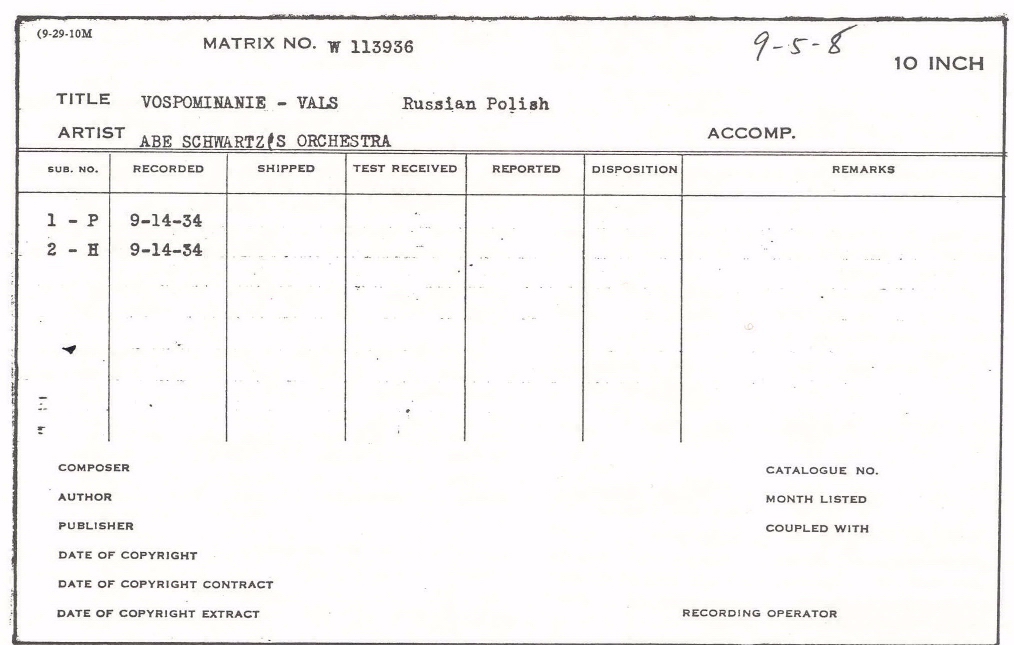 Redesigned
master card in use during 1934. It provides little information, but does give an
exact recording date for both masters. Again, no release information is given at
lower right, and it appears to have been unreleased. (Abe Schwartz was a
Roumanian-Jewish violinist, composer and bandleader.) In the 1910s and 1920s he
recorded extensively for Columbia; his Yiddish dances appeared in the old E-
series and in the "Hebrew-Jewish" 8000-F series. The latter was suspended
between 1930 and 1937, but Schwartz continued to record instrumental music that
appeared under different pseudonymns in the Russian, Ukrainian and Polish lists.
Redesigned
master card in use during 1934. It provides little information, but does give an
exact recording date for both masters. Again, no release information is given at
lower right, and it appears to have been unreleased. (Abe Schwartz was a
Roumanian-Jewish violinist, composer and bandleader.) In the 1910s and 1920s he
recorded extensively for Columbia; his Yiddish dances appeared in the old E-
series and in the "Hebrew-Jewish" 8000-F series. The latter was suspended
between 1930 and 1937, but Schwartz continued to record instrumental music that
appeared under different pseudonymns in the Russian, Ukrainian and Polish lists.
 A revised
master card form in use by the ARC labels after the late 1930s. The master (or
matrix) number at upper left gives an H prefix, showing that it was made in
Hollywood. The second column shows that "Farewell to Prague" was released on
Columbia 321-F, in the company's I-F Bohemian series. The rubber stamped date
next to it shows the date when the record was withdrawn from sale. The next
column shows that master H708 ("Svest Kova Alej") was used as the other half of
the coupling. Below the columns, another rubber stamped entry shows that the
master was still in the vaults when a 1961 inventory was taken. These titles
were part of an interesting 1942 session which combined Bohemian folk tunes with
Western swing titles. Adolph Hofner is a versatile San Antonio bandleader and
disc jockey who successfully synthesized the old songs he had learned in his
family with the fresh new sounds of Bob Wills in the 1930s.
A revised
master card form in use by the ARC labels after the late 1930s. The master (or
matrix) number at upper left gives an H prefix, showing that it was made in
Hollywood. The second column shows that "Farewell to Prague" was released on
Columbia 321-F, in the company's I-F Bohemian series. The rubber stamped date
next to it shows the date when the record was withdrawn from sale. The next
column shows that master H708 ("Svest Kova Alej") was used as the other half of
the coupling. Below the columns, another rubber stamped entry shows that the
master was still in the vaults when a 1961 inventory was taken. These titles
were part of an interesting 1942 session which combined Bohemian folk tunes with
Western swing titles. Adolph Hofner is a versatile San Antonio bandleader and
disc jockey who successfully synthesized the old songs he had learned in his
family with the fresh new sounds of Bob Wills in the 1930s. 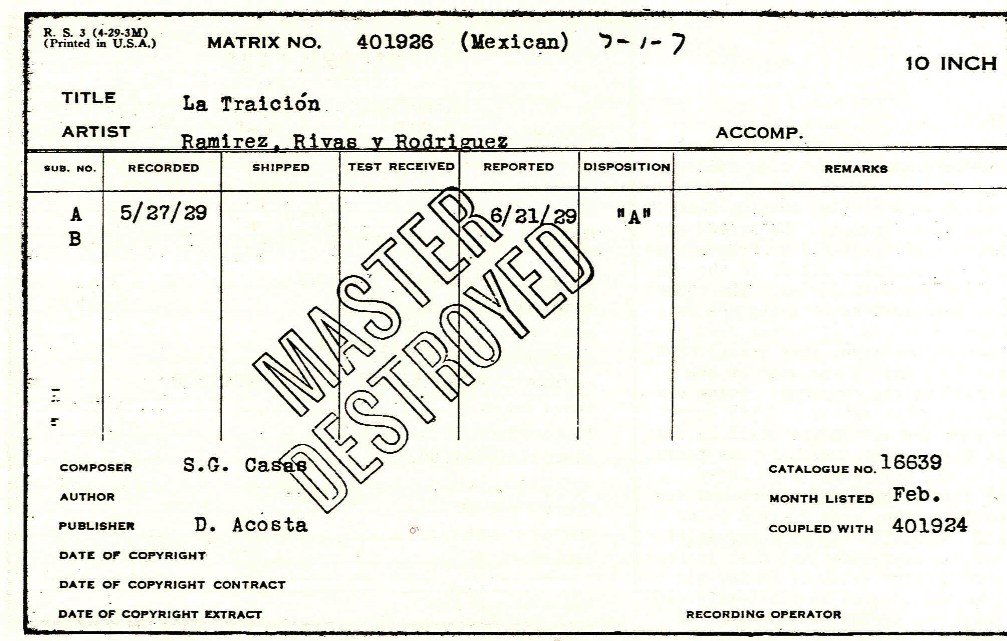
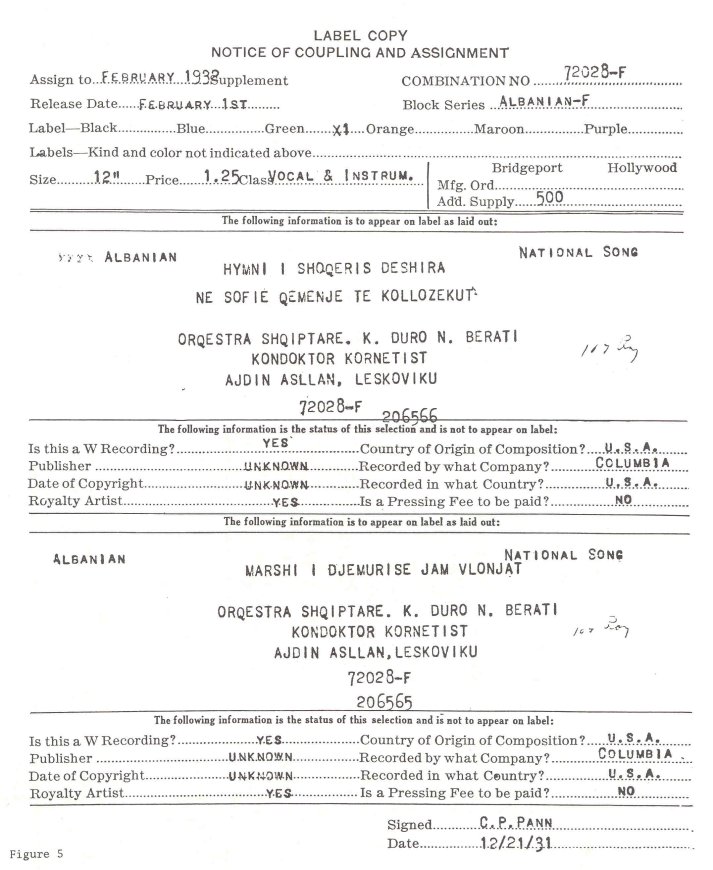 A sheet from the Columbia master log book, showing masters from W107200 to
W107299, made during October-November 1926. Opposite each master I have been
able to trace there is a release number, followed by an abbreviated artist,
credit. Take numbers, if known, are given as -1, -2, etc. following the last two
numbers of the master. In some cases, take numbers are known (e.g. W107270-74)
where no other data has been found.
A sheet from the Columbia master log book, showing masters from W107200 to
W107299, made during October-November 1926. Opposite each master I have been
able to trace there is a release number, followed by an abbreviated artist,
credit. Take numbers, if known, are given as -1, -2, etc. following the last two
numbers of the master. In some cases, take numbers are known (e.g. W107270-74)
where no other data has been found. 